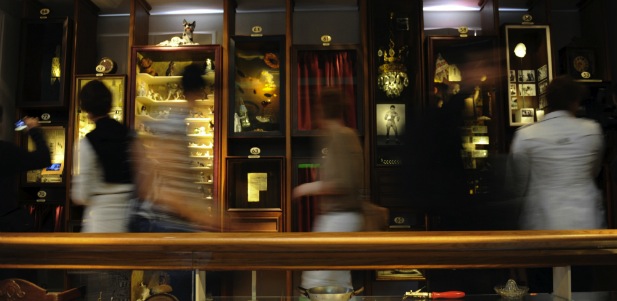The Museum of Innocence
TURKISH NOBEL PRIZE WINNER ORHAN PAMUK BRINGS HIS LATEST NOVEL TO LIFE IN ISTANBUL

Earlier this spring, the acclaimed Turkish novelist Orhan Pamuk gave his beloved city of Istanbul its very own Museum of Innocence. Based on the novel of the same name which he penned in 2008, Pamuk’s museum – like all of his endeavours – is a labour of love, which effectively brings to life the characters and events of his most recent work, as well as the time in which it was set.
The Museum of Innocence tells the story of Kemal Basmaci, a member of Istanbul’s upper class, and his love for Fusun, a distant relative who he by chance encounters while shopping for a gift for his fiancée. Set during the early 1970s – a time when Pamuk himself was living the upper class high life in the city’s Nisantasi district – the novel, like many of Pamuk’s other works, describes the awkward convergence of East and West in Istanbul, as well as the identity issues which continue to plague Istanbullus to this day. According to Pamuk, aside from being a love story redolent of nostalgia, The Museum of Innocence explores the psyche and characteristics of Turkey’s upper class citizens, who ‘in spite of their pro-Western attitudes are highly conservative’.
Located in an old 19th Century house in Istanbul’s Cukurcuma neighbourhood, Pamuk’s Museum of Innocence is home to four floors and 83 display boxes (each one referring to a particular chapter of the novel), all of which serve to showcase the objects featured throughout the book. Upon entering the museum, one comes face to face with a wall of thousands of cigarette butts (supposedly belonging at one point to Fusun, and later collected by Kemal) mounted on a wall behind a Plexiglas screen. As well, among the other myriad odds and sods in Pamuk’s wonderland, one can see Fusun’s earing (which fell from her ear while making love to Kemal), assorted lottery tickets, soda bottles, ceramic dogs, and scandalous newspaper clippings featuring women with black marks across their faces.
It wouldn’t be farfetched to consider the Museum of Innocence a door (literally) to the soul of one of Turkey’s literary giants
Although at first glance, Pamuk’s museum may seem nothing more than a novelty, or at best, a celebration of the author’s work, in reality, it’s so much more than this. In constructing the museum – which cost an estimated $1.5 million, and took years of preparation – Pamuk took on the role of his protagonist, gathering, as Kemal did, all the objects related to his love for Fusun. Accordingly, this role-playing took Pamuk all around his beloved city, as well as to other parts of the world, all so that he could faithfully bring to life Kemal’s conception. As well, the museum is also noteworthy in that it is the first of its kind (i.e. a museum based on a novel), and that it serves as a sort of time capsule for the 1970s – a period often cited as marking Turkey’s transition into the ‘modern’ era.
While the museum offers a truly unique experience to fans of The Museum of Innocence, those who’ve read Pamuk’s other works, such as Istanbul: Memories and the City, as well as his collection of essays, Other Colours will likewise appreciate Pamuk’s celebration of huzun (a sort of sweet nostalgia central to the Istanbullu mentality). What the museum does not claim to offer, however, is a glimpse into the life of Turkey’s most celebrated and controversial author. ‘Very little of me is here,’ says Pamuk, ‘and if it is, it’s hidden’.
To say that Pamuk’s works are one long paean to Istanbul would not be an understatement; and in his Museum of Innocence, the love, huzun, and melancholy he feels for the city are brilliantly materialized in a way only Pamuk could. Say what he may, it wouldn’t be farfetched to consider the Museum of Innocence a door (literally) to the soul of one of Turkey’s literary giants.
|
Joobin Bekhrad (BBA, MSc.) is the Founder and Editor of REORIENT, as well as the Co-Founder of artclvb, an online platform for contemporary Middle Eastern art. He is also the author of a new translation of Omar Khayyam's poems from Persian into English. |
Comments
Powered by Facebook Comments





